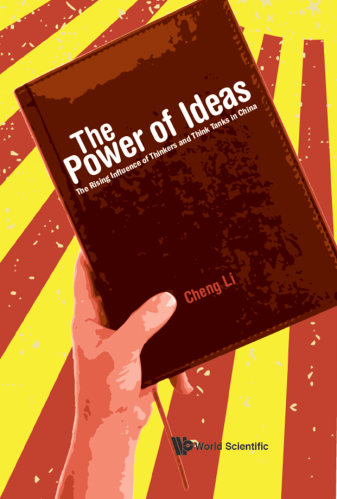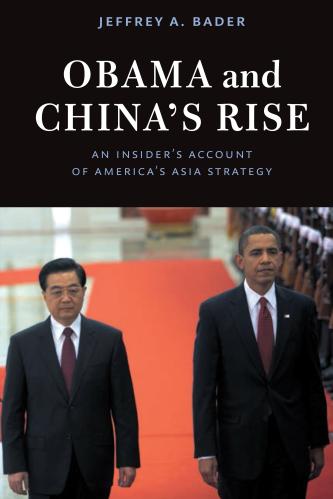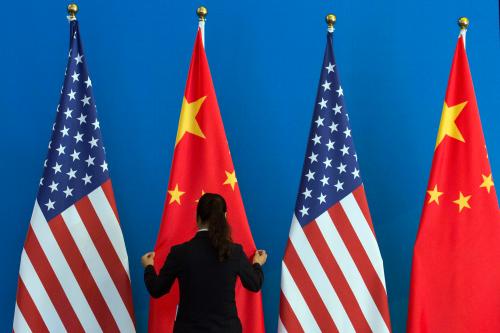On eight specific issues on which the United States has engaged intensively with China, the scorecard is quite mixed, writes David Dollar. This post is excerpted from a piece originally published with the Democracy Journal.
The beginning of China’s rise as a global power can be dated to the country’s accession to the World Trade Organization in 2001. Throughout the next 16 years of the Bush and Obama administrations, the United States engaged in intensive bilateral diplomacy with China with the aim of getting ever-greater Chinese support on issues ranging from security to the economy to the environment. The Bush administration launched a Strategic Economic Dialogue with China, and a separate Security Dialogue. President Obama combined these into a single Strategic and Economic Dialogue (S&ED). But the change in form was not important; the dialogues represented a continuous effort to draw China into the global system.
Diplomacy is the art of trying to get other countries to do what you want. In the case of the United States, we wanted China to support the economic and security institutions that were established under our leadership at the end of World War II. It is fashionable now to argue that the whole strategy of engaging China and inviting it into our global institutions has failed; but this assessment is too negative. In a recent essay, I identify eight specific issues on which we engaged intensively with China. The scorecard of these results is quite mixed. By my assessment:
- In three areas, China’s actions have gone beyond what reasonably could have been expected: currency and global imbalances, climate change, and nuclear non-proliferation (especially regarding Iran and North Korea)
- In two areas, the outcomes are about what should have been expected: intellectual property rights protection and development assistance; and
- On three issues, China has failed to do what we want: market access, militarization of the South China Sea, and democracy and human rights.
It is interesting that these successes and failures do not map onto particular arenas—economic or security.
It is this mixed record of diplomacy that makes it difficult to decide what to do next. Some voices call for decoupling and isolating China through a new Cold War, which would be very costly and is too hostile a response to the record. The objective here would be to prevent China from rising to be a co-equal power and is likely to fail. By 2017, there were 144 countries that had more trade with China than with the United States, including 50 countries in Africa and all countries in Asia except Afghanistan and Bhutan. If we try to isolate China, our partners are not likely to follow us, with the result that we isolate ourselves instead. I argue that, alternatively, we can draw on these lessons of failure and success to tailor an engagement strategy going forward that would be effective in getting Chinese cooperation in more areas, though probably not in all areas.
The successes all shared the characteristic that China came to see the global public good in question as clearly in its own interest. Also, intensive U.S. bilateral diplomacy was complemented by multilateral institutions. The United States cannot have much hope of changing Chinese behavior if the ask in question cannot be nested in a multilateral agreement.
Based on this logic, there is reason to expect that we could do better on the issues of development assistance, intellectual property rights protection, and market access. The best hope for the latter two economic issues is to include them in modern trade agreements that draw in a growing number of countries, including eventually China. The Trans-Pacific Partnership, in particular, was a good effort to address some of China’s abusive trade practices, and it was a big mistake for the United States to pull out of the agreement. The TPP could be a model for larger WTO modernization.
On the issue of development assistance, China’s Belt and Road Initiative and its other bilateral efforts are likely to run into various problems due to lack of transparency and competition in implementation and to the commercial nature of the lending, which is already causing debt sustainability problems. Multilateral efforts including the Asian Infrastructure Investment Bank are likely to be more successful. We should encourage China to learn from these experiences and to both shift more resources to the multilateral institutions and make its bilateral aid more transparent and norm conforming.
A key question in the U.S.-China relationship is whether we can cooperate on these various global public goods even as we continue to have some serious disagreements. In the South China Sea, there is a reasonable prospect of a multilateral effort to continue to reinforce freedom of navigation. But there is probably no prospect of reversing China’s militarization of the islands.
On democracy and human rights, it is important for the United States to continue to speak out and to strive to be a better example for other countries. But it is not likely that we can do more than that to improve the human rights situation in China. Meanwhile, the U.N. human rights apparatus has largely become subservient to authoritarians, so in this arena a multilateral approach is not likely to generate progress.
If we are to coexist peacefully with China, it will be important to be honest about our differences while working together on the large number of issues where we do indeed share common goals and interests and where real progress is possible.
The Brookings Institution is committed to quality, independence, and impact.
We are supported by a diverse array of funders. In line with our values and policies, each Brookings publication represents the sole views of its author(s).








Commentary
Where progress with China is most likely—and where it isn’t
March 18, 2019